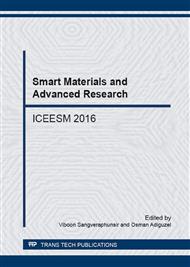p.60
p.65
p.70
p.75
p.87
p.92
p.97
p.102
p.108
Implementation of Cast Steel Nodes by Considering of CTOD Value
Abstract:
Cast steel nodes are being increasingly popular in steel structure joint application. Cast steel node joint consists of two parts: casting itself and the welds between the node and the steel member. The fatigue resistances of these two parts are very different. This paper presents a using of the MSF (Main Structure Farm) casting nodes S420 instead of carbon steel plate by considering the Crack Tip Opening Displacement (CTOD) value and the percentage of coarse grain. The sampling work piece from the weld and heat affected zone (HAZ) were tested and compared the CTOD value and mechanical properties to the standard. This result shows that the CTOD values are under allowable value. After that, a finite element (FEM) program was corporately used to simulate. It is acceptable cast node even the CTOD is undesirable. The benefit of the paper is to show the procedure to prove cast steel nodes by using CTOD.
Info:
Periodical:
Pages:
87-91
Citation:
Online since:
January 2017
Authors:
Keywords:
Price:
Сopyright:
© 2017 Trans Tech Publications Ltd. All Rights Reserved
Share:
Citation:


